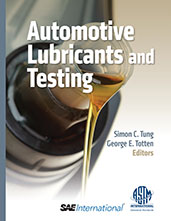Technical Paper
A Test Method for Evaluating Material Combinations of Automotive Camshaft and Follower Components Subjected to Lubricated Sliding Simulating Variable Valve Actuation
2007-07-23
2007-01-1970
Cam phasing and Variable Valve Actuation (VVA) are used increasingly to alter the opening and closing of the valves to improve fuel economy by most of the automotive engine manufacturers. In instances where the design constraints require use of rolling and sliding follower interfaces with camshaft lobes, several solutions are possible. However, finding an inexpensive solution is challenging. This paper briefly reviews some of the conventional wear test methods that have primarily been used for piston ring cylinder liner wear assessments. Later on a new test method developed using the modified Optimol SRV 4 wear tester is described. This test method was used to assess and rank material combinations for sliding wear assessment of various camshaft lobe and follower components.


